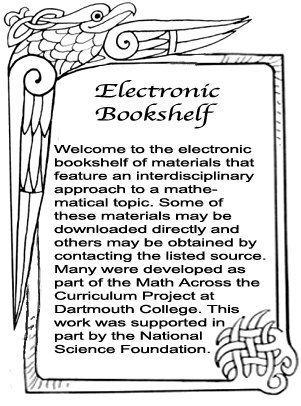pg 58
"Similarly, some theorists would suggest that "learning science" is a process that is framed by discourse genres, forms of activity, and ways of establishing semantic
links among events, objects, and persons (see Lemke, 1988, 1990; Rosebery,
Warren,& Conant, 1992). Other researchers have explored similar issues
with respect to mathematics instruction (Ball, 1991, 1993; Bill, Leer, Reams,
1992; Hiebert & Wearne, 1993; Lampert, 1990; Spanos, Rhodes, Corasaniti
Dale, & Crandall, 1988)."
Connections between interactions in math and science classes are closely related.
Also, several references to consider:
Ball, D. (1991, November). What's all this talk about "discourse"? Arithmetic Teacher; pp. 44-48.
Ball, D. (1993). With an eye on the mathematical horizon: Dilemmas of teaching elementary school mathematics. Elementary School Journal, 93, 373-397.
Lampert, M. (1990). When the problem is not the question and the solution is not
the answer: Mathematical knowing and teaching. American Educational Research
Journal, 27, 29-63


